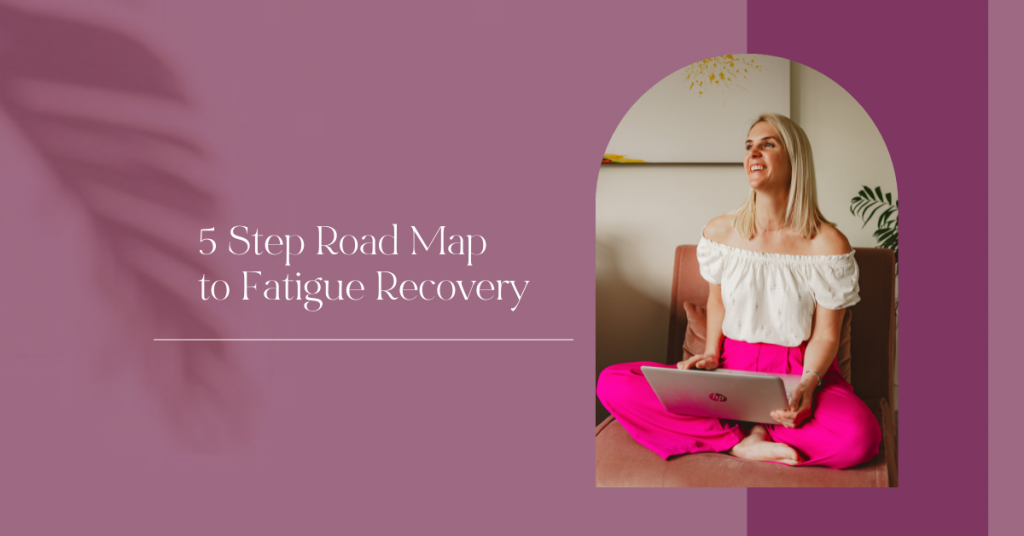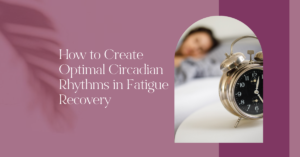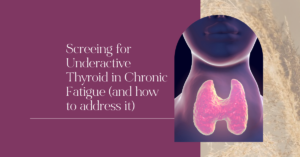Albert Einstein said:
“The definition of genius is taking the complex and making it simple”.
I am no genius and fatigue recovery is far from simple, but it can be more simple than we make it out to be.
I am naturally a big picture thinker and for me, context is everything.
Yet when I first began my fatigue journey I was doing a little bit here and a little bit there. I couldn’t see the bigger picture and I lacked context.
I wish someone had written for me what I am writing for you today.
If you have ever researched terms like “causes of fatigue”, “fatigue recovery” “cfs/me” or anything similar, no doubt you will get a wealth of information.
But information is useless unless you can transform it into wisdom. In this case, knowing what specifically you need to do for your unique situation and creating an embodied experience of it.
That is where I come in.
Yes, you can spend hours, weeks, months or even years doing your own research, taking courses that give you pieces of the puzzle, but not the full puzzle, second guessing yourself and feeling confused.
Or…
You can hire someone who knows what they are doing to create a strategy for you to follow that is unique to your biochemistry and life experience to date.
Not everyone is ready to, has the means to, or wants to work with me, so this blog is to give you an overview of how to see the bigger picture of your fatigue recovery and have a starting point from which to move forward.
Foreword: Fatigue is complex and multifaceted and can be caused by many things such as nutrient deficiencies, thyroid dysfunction, sex hormone imbalances, sleep apnea, MCAS, food sensitivities (e.g. gluten) etc. The following piece of writing assumes that none of these are the cause of fatigue and fatigue may in some cases be “unexplained” as is the case in CFS/ME, Fibromyalgia and Burnout.
Contents
- Step 1: Foundations
- Remove the Threat; Cell Danger Response
Step 1: Foundations – Creating a Healing State
Remove The Threat
The tallest trees have the deepest roots. Foundations are everything.
When I work 1:1 with clients my job is to take all the information that we have from their case history, previous testing and current presentation and create a path that leads to wellness.
And the first thing I am looking for is how do I help this person create a healing state?
To be in a healing state there needs to be an absence of real or perceived threat. The best model for understanding this is the cell danger response.
The Cell Danger Response:
The cell danger response (CDR) is a universal cellular response to threat. Once triggered, healing cannot be completed until all the stages of the CDR have experienced resolution. Persistent activation of the CDR inhibits healing and leads to chronic illness and dis-ease.
In essence, to get traction on recovery, you have to help the cell move from what is known as CDR1 (Cell Danger Response 1) through CDR2 (rebuilding and repairs) and then CDR3 (re-establishing system wide communication).
The things that can keep the body stuck in CDR1 are toxins, infections, chronic stress and trauma.
Examples:
- Toxins: biotoxicity from mold, heavy metals or environmental pollutants
- Infections: Lyme and co-infections, parasites, bacterial infections in the gut, viruses (e.g. EBV, COVID)
- Chronic stress and trauma: are relative to the individual and represent the unprocessed survival energy which is stored in the body. This also includes understanding when our own thinking and behaviours are impacting our nervous system and we are what I like to call “our own lion”.
You’ll know you are in CDR1 if you feel like your interventions make you feel worse or you see no progress at all.
If this is the case, it is important to know:
- Whether you need to address mold, toxins or support detoxification or not.
- If you have an infection that needs to be addressed or not.
- How much stress or trauma is impacting your nervous system and gather the resources required to support a more regulated system
Sometimes the answers are not always obvious and may require further testing, trial and error – if you are working with a practitioner, be patient as they learn your body and how it responds so that they can gather information along the way.
It goes beyond the scope of this piece of writing to detail how we address each of those scenarios. That is for another day and in the meantime, there are many books and podcasts which cover these topics in more detail.
In summary, the first step is to acknowledge or ask:
- What is preventing me from creating a healing state?
- What needs to be done to address this threat?
And please keep in mind that sometimes it isn’t just one thing. Often it can be a few things in combination and your combination will be unique to you.
Creating a Healing Routine
As you move through your recovery journey your routine will change as your capacity to withstand stress changes too.
In the earlier stages of fatigue recovery there may be a very deep need to honour your body’s desire to rest.
As your energy increases and you are able to do more, you’ll want to start to structure your day to avoid what is known as the “Boom and Bust”.
It can be tempting when you have a little more energy to use it. When you are busy and feeling good, you can feel on top of the world. When you are in a crash, you can feel low, hopeless, frustrated and lonely.
It is common when someone has fatigue symptoms to think that they need to rest until they feel better. This usually happens in the early stages when you lack understanding about what is happening to you and your body.
Rest is important and we all need periods of rest. But excessive rest over time can cause mental and physical deconditioning.
The purpose of establishing a baseline routine is to establish stability in your life. Your baseline routine will prevent you from losing capacity to do the things you can already do, and over time, help you do more in an incremental way and feel better doing it!
Your routine should allow for periods of stress and periods of rest and recovery where you are in your healing state. It will look different to each person and it will vary across your recovery journey.
It can be very helpful to keep a diary for a few weeks and note down what you are doing and how each activity makes you feel. It sounds simply but can be very revealing to help you refine your daily routine.
Regulating the Nervous System
Here it might also be a good place to say that resting is not the same as regulating your nervous system. Resting is about “being” in the parasympathetic nervous system, the branch of the autonomic nervous system that is responsible for recovery and repair.
Regulating the Nervous System isn’t about creating a life where you are parasympathetic as often as possible or cutting all the stress out of your life.
A regulated nervous system means that your nervous system is flexible to respond appropriately according to the given situation.
Think of it like improving your “stress fitness”.
As we move through the day it is appropriate to fluctuate between feeling more aroused and activated and feeling more settled and even sleepy or very relaxed (like when it’s time to go to bed).
A flexible system moves appropriately through different arousal states depending on the environmental cues.
Chronic stress and trauma create changes in the NS which result in loss of flexibility and fluidity. This means that we may get stuck ‘on’ (high sympathetic activation: fight or flight) or stuck ‘off’ (immobility, freeze, shut down).
Poor “stress fitness” can mean that the system can be very sensitive to even small stressors and finds it difficult to settle (remaining high) or crashing low to overcompensate. i.e swinging between very high and very low.
Learning to regulate your system better is learning to ‘be’ with stress, not avoid it. To increase capacity to tolerate challenge without losing ourselves.
It is also being flexible to return to a place of safety, connection and wholeness with a sense of flow and ease, as we move through the fluctuating experiences of life.
Your baseline routine should allow you to titrate periods of manageable stress with opportunity for recovery. But you may need some specific tools which help you support the nervous system.
These include:
- Parasympathetic time; yin yoga, restorative yoga, time in nature, napping, sleeping etc.
- Vagal toning exercises; there are many different ways to approach vagal tone – my personal opinion is that this is best achieved through connection with the body and learning to settle the system.
- Limbic Retraining Exercises; there are different methodologies most of which involve redirecting unhelpful attention and using visualisation techniques. I have personally done DNRS by Annie Hopper.
Step 2: Address Secondary Imbalances
- Low Hanging Fruit; blood sugar, oxygenation, digestive health
- More Complex Biochemistry; mitochondria, detoxification, adrenal and sex hormones
1. Low Hanging Fruit; Blood Sugar, Oxygenation, Digestive health
Step 1 was all about creating the foundations to move out of CDR1 and support the body in creating a healing state.
When the body has been exposed to an intense threat or chronic stress, this starts to impact other systems and therefore, as the body is more ready to accept healing, these systems will need to be supported.
I’ve divided these systems into “Low Hanging Fruit (LHF)” and “More Complex Biochemistry (MCB)”.
You can think of the LHF as the foundations for the MCB as what you do here, will likely positive impact all the other systems too.
Low Hanging Fruit Includes:
- Addressing blood sugar imbalances; mostly through diet but sleep, stress, movement and nutritional deficiencies can play a role. Addressing blood sugar can also support your adrenal glands and your nervous system.
- Supporting tissue oxygenation: by ensuring that red blood cells are healthy – often done by testing a full blood count and addressing possible nutrient deficiencies like iron, B12, folate and B6. There needs to be regular movement for blood flow, electrolytes for blood volume and you want to make sure that you are breathing well e.g. nasal breathing. Mold biotoxicity can affect tissue oxygenation and circulation and this can be underyling in post exertional malaise (PEM).
- Digestive health: is closely linked with immune function and therefore must be balanced for good energy. Here I may use Functional Stool Testing and an individual appropriate elimination diet to support digestive function.
This work may clear what I like to call “the white noise” and creates a foundation on which more complex biochemistry can be supported.
Please note: there is always nuance and sometimes we need to support these system first to prepare the body to do some “threat removal” work.
2. More Complex Biochemistry; Mitochondria, Detoxification, Inflammation, Adrenal and Sex Hormones
Once you have created the foundation by addressing low hanging fruit, it’s time to do the fine tuning and honing in on the details of more complex biochemistry – some of which may have naturally balanced out from the work done so far.
This may look like:
- Supporting detoxification through a low tox lifestyle, nutrients that support biotransformation in the liver and increasing elimination with sauna, healthy bowel movements, exercise and lymphatic drainage. If you are working with biotoxicity, this step may come sooner.
- Support the mitochondria: the mitochondria are the energy powerhouses of the cell. They are complex and there are lots of moving parts that impact their function. If mitochondria dysfunction is suspected, this is normally a good time to test using an organic acids urine test.
- Sex Hormones: I find that clients usually have a good sense of whether or not hormones are an issue for them. This may show up as intense cyclical symptoms or irregular cycles. As women get closer to 40 and beyond, low progesterone is usually on my radar and I have had great success with clients who have decided to opt for body identical hormone replacement therapy where appropriate. I like to use the Dutch Complete Hormones with CAR to assess hormonal needs. Adressing Fatty acids balance can also be helpful and I like to use the NutrEval or a blood spot Metabolic and Essential Fatty Acid Test.
- Adrenal Hormones: I like to use the Dutch Complete Hormones with CAR to assess adrenal function. My experience personally and in practice is that it can be helpful to know how the adrenal glands are functioning but ultimately, they will only begin to function better when the nervous system is better regulated. We can of course use herbs and nutritional supplements to add extra support and work on light exposure to address circadian rhythms.
- Support Inflammation: By now, especially if you have addressed digestive health, a lot of the work on supporting inflammation may already be done. Here there might be a need to add supplements like curcumin, vitamin A, vitamin D and address fatty acid balance. Hormetic stressors like fasting, cold therapy and heat therapy (e.g. sauna) can also be helpful tools. More advances testing (e.g. cyrex testing) could be beneficial for clients with autoimmunity.
Step 3: Reprogramming Energetically Expensive Personality Traits or Addressing Past Trauma
“To achieve something you have never achieved before you must become someone you have never been.”
Action alone is not enough to generate wellbeing. It may produce short term results but long term, these may be unsustained unless you shift your unconscious programming.
Even if you became unwell due to an infection, a virus or mold biotoxicity, very often these are just the straw that broke the camel’s back.
Over a lifetime we can develop coping mechanisms that become enmeshed with our personality. These behaviours, habits, tendencies or parts of our personality were essentially created to gain love, avoid rejection and keep us safe. We all have them.
It is important to acknowledge that these parts of you are not wrong or bad. In fact, they may have been very useful and even beneficial across a lifetime. However, they can be “energetically expensive” which means that they use up a lot of energy to maintain and sustain which can be inherently stressful.
They may not be unconscious and we may not even realise we are stuck in a loop of behaviours which are creating dis-ease.
These personality traits are endless but can look like perfectionism, the need to control, overgiver or helper syndrome, achievement addiction, workaholism, people pleasing and many more.
In the earlier stages of recovery, there may not be enough energy to sustain these parts and the body is able to sacrifice them to maintain physical survival by other means. However, as energy returns, these parts, if not fully integrated, may start to play a more active role in day to day behaviour and could sabotage progress.
As energy increases, we will also have more energy to integrate these parts or past trauma that informs them. At this stage awareness is required to identify where these parts are driving behaviours which do not align with your wellbeing. They can be very sneaky, so you have to keep a watchful eye.
Step 4: Increasing Physical and Mental Activity while Supporting Recovery
As energy increases you will naturally find that you are able to do more mentally and physically. This could look like:
- Working longer hours, feeling more creative or mentally clear.
- Increasing physical endurance, stamina and strength – essentially being able to do more physical work in less time
- More socialising and engagement in recreational activities and hobbies
Ultimately, it is your ability to recover after exertion that allows you to do more. When we stress the body it breaks down and the rebuilding is what improves function and performance.
Success will be achieved by the right balance between challenge, stability and rest. Patience is the name of the game as you increase little by little.
Extra consideration could be given to nutrition variables and sleep to support recovery as necessary. You could even consider using hormetic stressors like fasting, heat stress, cold stress or hypoxia to build resilience.
Step 5: Preparing to Be Well
The experience of fatigue is a journey. If you let it, it will change you for the better and bring wisdom and insight for which you will be forever grateful.
We can reinforce sustained recovery by remembering and integrating the lessons that we have learnt along the way and making sure we stay connected to the body, our values, our needs and purpose.
Here I will reiterate that what makes recovery sustainable is the ability to integrate the lessons, recalibration of the nervous system and reprogramming of unconscious and unhelpful patterns.
As much as complete recovery is the end goal with so much to gain, being fully well can also sometimes be experienced as a loss.
Human beings naturally run from pain and move in the direction of pleasure. If there is any chance that there is pain associated with being well, you may unconsciously sabotage your recovery (please note: this is unconscious and not deliberate).
A question you may not want to ask is: what do I lose by being fully well?
Perhaps unconsciously you believe that you are not worthy of love and attention unless you need taking care of?
Perhaps experiencing fatigue means that you don’t have to take the leap you are so afraid of in your business or career?
Maybe you will have no excuses to start dating again?
Maybe you will have to set boundaries more honestly instead of using your health as an excuse.
All of these fears or beliefs can be addressed and supported, but that cannot be done until we become aware and willing to admit that they are even affecting us in the first place.
Final Words and Thoughts
I believe that individual health is personal and nuanced. I have done my best to give an outline of how I approach this work with my clients but as we work together, the client and the client’s body ultimately shows me (and them) the way.
Sometimes we have do things in a different order, some stages take longer than others, sometimes life happens and we have to go back a few stages along the way.
No process is linear and no process is perfect. There are also many many many things that I have not mentioned or only given lip service to along the way. These are for another day….
Would you like some more help?
My clients hire me to be the project manager of their health. Health is personalised and nuanced and many do not want to waste time and energy researching, googling and trying to work out what applies to them, what doesn’t, and what they need to do for their unique situation.
I work with clients 1:1 for a minimum of six months to help them carve out a road map to health based on the framework I have described above.
The women I work with experience fatigue, burnout and chronic dis-ease. They are usually high achievers, purpose driven and usually feel a deep need to serve others in their careers and life. Fatigue, brain fog and low energy is impacting their day to day experience of life and their ability to live out their purpose, stripping life of it’s meaning.
Asking for help doesn’t always come naturally and when you work with me, you can finally soften, surrender and know that you will be taken care of. You can leave all the work to me and you can just focus on what you need to do to be well. ⠀⠀⠀⠀⠀⠀⠀⠀
⠀⠀⠀⠀⠀⠀⠀⠀⠀
Working with me includes:⠀⠀⠀⠀⠀⠀⠀⠀⠀
⠀⠀⠀⠀⠀⠀⠀⠀⠀
- Full health history and review of previous laboratory testing to create a bespoke 6 month recovery road map ⠀⠀⠀⠀⠀⠀⠀⠀⠀
⠀⠀⠀⠀
- Bi-monthly 1:1 Functional Medicine Consultations where we review progress and I hold your hand and guide you through the journey one step at a time⠀⠀⠀⠀⠀⠀⠀⠀⠀
⠀⠀⠀⠀⠀⠀⠀
- Functional Testing, interpretation and personalised guidance on food, supplements, exercise and lifestyle⠀⠀⠀⠀⠀⠀⠀⠀⠀
⠀⠀⠀⠀⠀⠀⠀⠀⠀
- Nervous system rebalancing sessions and an extensive toolbox to support a healing state⠀⠀⠀⠀⠀⠀⠀⠀⠀
⠀⠀⠀⠀⠀⠀⠀⠀⠀
- Reprogramming energetically expensive personality traits to free up energy for wellbeing⠀⠀⠀⠀⠀⠀⠀⠀⠀
⠀⠀⠀⠀⠀⠀⠀⠀
- Weekly access to my full support via email for accountability and to maintain momentum⠀⠀⠀⠀⠀⠀⠀⠀⠀
⠀⠀⠀⠀⠀⠀⠀⠀⠀
My goal is to help you recover your energy and aliveness so that you can achieve your goals in a sustainable way and live a life of purpose, happiness and joy!⠀⠀⠀⠀⠀⠀⠀⠀⠀
⠀⠀⠀⠀⠀⠀⠀⠀⠀
Let’s do it together! ⠀⠀⠀⠀⠀⠀⠀⠀
⠀⠀⠀⠀⠀⠀⠀⠀⠀
I’d love to know more about you, what you have explored so far and how I can help. Please complete this form and I’ll get back to you with some feedback and some suggestions about how we could move forward together! ⠀
⠀⠀










